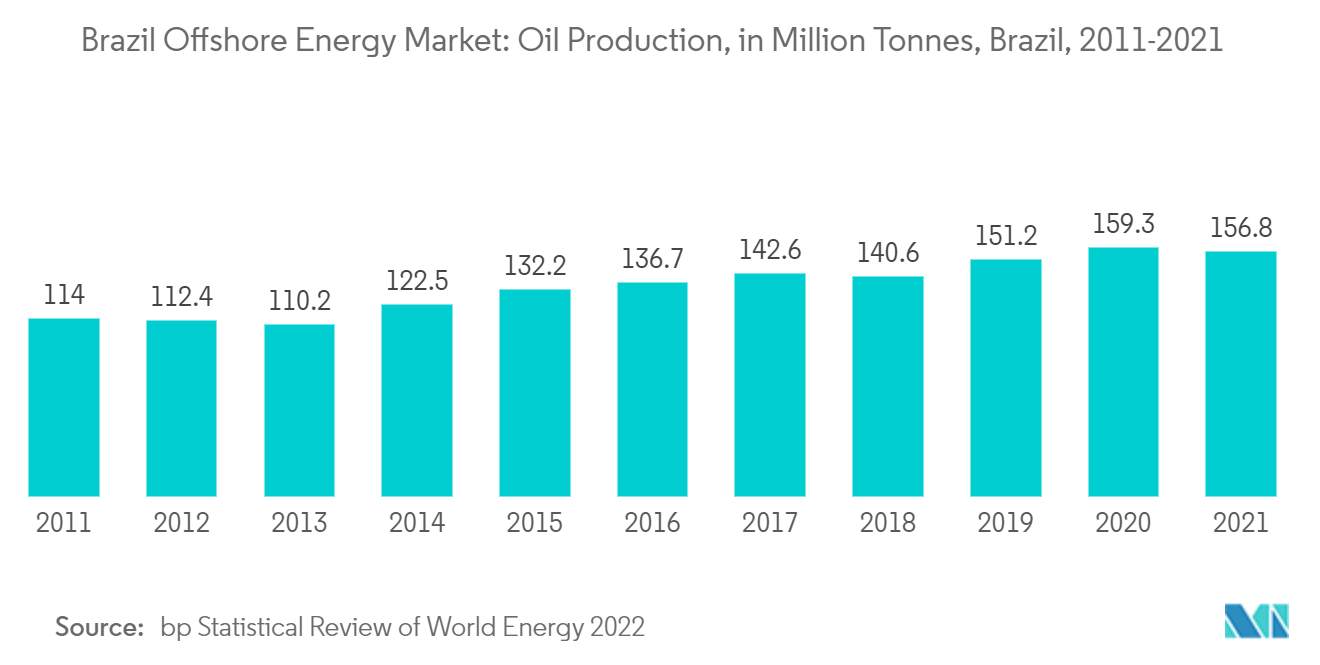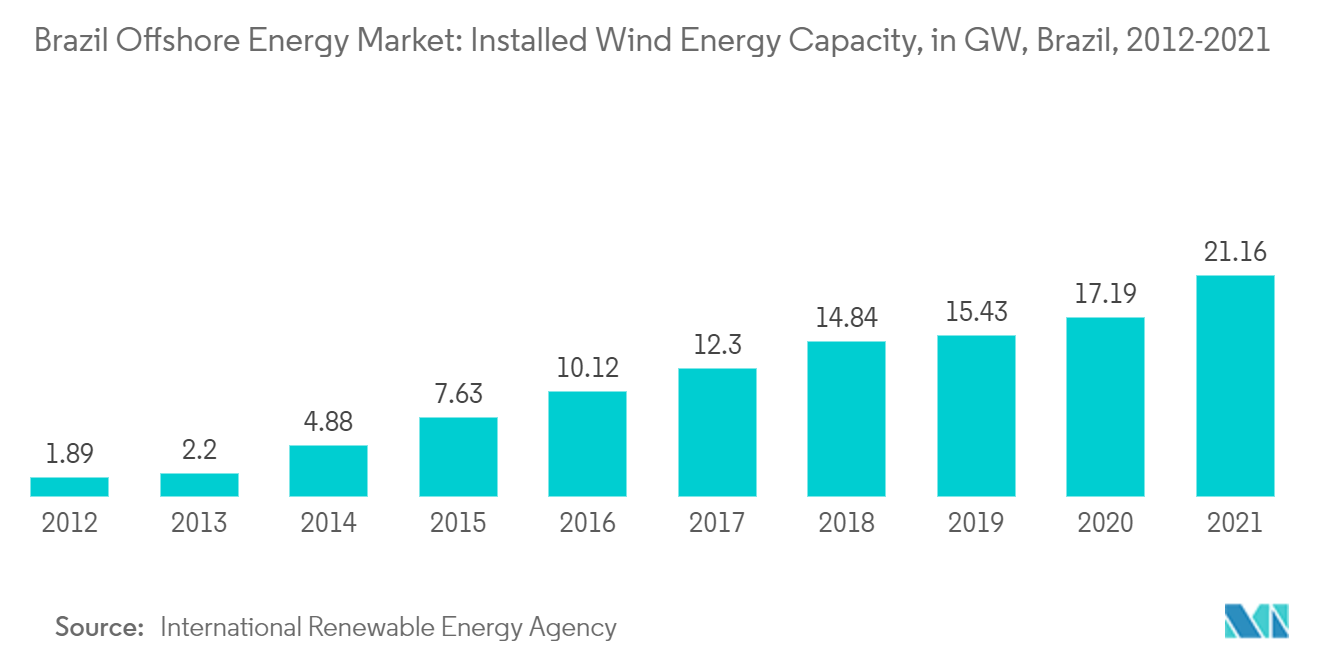Market Trends of Brazil Offshore Energy Industry
This section covers the major market trends shaping the Brazil Offshore Energy Market according to our research experts:
The Oil and Gas Segment is Expected to Dominate the market
Offshore oil and gas production, which involves extracting oil and gas from the seabed, is one of the most important components of the world's energy supply. It requires the use of increasingly sophisticated technological methods and greater attention to environmental elements.
Brazil's exploration and production activity has shown significant growth during 2021, resulting in increased spending on oilfield services. The growth during the last year mainly came from the offshore sector. The increased spending on oilfield services can be related to increased drilling and completion practices. These are expected to drive the offshore energy market.
Brazil has several large-scale offshore upstream projects in the pipeline. The country is expected to contribute more than 20% of global offshore crude oil and condensate production by 2025. The majority of the production is expected to come from the Pão de Açúcar in the Campos basin and Carcará fields.
As of June 2022, there are around 7 active rigs operating in the offshore areas and 3 active rigs in the onshore areas of the country. As of 2021, floating assets, such as Floating Production Storage and Offloading (FPSO), Drillships, semi-submersibles, and Floating Storage and Offloading (FSO), accounted for more than 80% of the active offshore platforms in the country. This, in turn, indicates the dominance of offshore floating assets in Brazil's upstream oil and gas industry.
Petrobras has plans to invest around USD 68 billion for the period 2022 to 2026. Of this total investment, 84% is allocated to the exploration and production (E&P) of oil and natural gas. Of the total E&P CAPEX (USD 57 billion), around 67% will be allocated to pre-salt assets. This indicates that the upstream oil and gas sector, especially the offshore oil and gas assets in Brazil, are expected to receive significant investment during the forecast period.
It has been observed that the production for oil in Brazil has increased significantly in recent years. In 2021, the country's total natural gas production reached 156.8 million tonnes, representing an increase of about 3.7% over 2019. In view of these factors, the ongoing investments and developments in offshore oil and gas industry in the country is expected to dominate the market during the forecast period.

Government Initiatives to Develop Offshore Renewable Energy
As reported by the national statistics agency and Central Bank, Brazil's GDP increased by 4.6% in 2021. This had a direct impact on electricity consumption, which increased by 4.1% from the previous year.
In Brazil, wind energy has seen virtuous growth in the last decade, jumping from 1.89 GW in 2012 to 21.16 GW by 2021. Currently, wind energy accounts for 11% of the country's electricity generation.
GWEC participated with ABEEólica in the development of a regulatory framework for offshore wind in Brazil in 2021, marking a milestone in the implementation of offshore wind in Brazil. By the beginning of 2022, the long-awaited Decree No. 10,946/2022 was published, providing for the transfer of physical spaces and the utilization of natural resources for offshore power generation. This document, which came into force in June 2022, provides a positive signal to the market to begin the process of developing the first offshore wind projects.
According to the Brazilian Institute of the Environment and Renewable Natural Resources (IBAMA), investors are now paying attention to Brazil, resulting in licensing requests for more than 80 GW of offshore wind projects. In Brazil, the technical resource potential is estimated to be more than 700 GW, according to Energy Expansion Plan (EPE) roadmap. Furthermore, EPE estimates that Brazil will reach 16 GW of offshore wind capacity by 2050, with a 20% reduction in capital expenditures.
In November 2022, as part of a memorandum of understanding (MoU), Prumo and TotalEnergies agreed to conduct studies for the installation of logistic bases to support offshore wind projects within the Açu port area of Rio de Janeiro, Brazil. In accordance with the agreement, TotalEnergies will conduct feasibility studies for offshore wind farms with capacities of up to 3 gigawatts in the immediate vicinity of the port over the next two years.
These government initiatives and developments are anticipated to drive the offshore energy market in the country.

